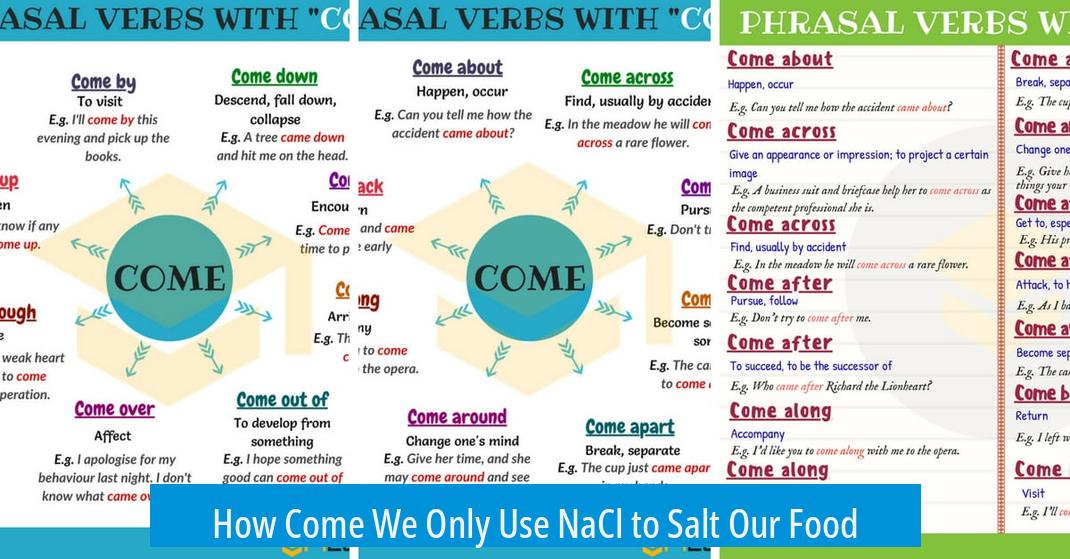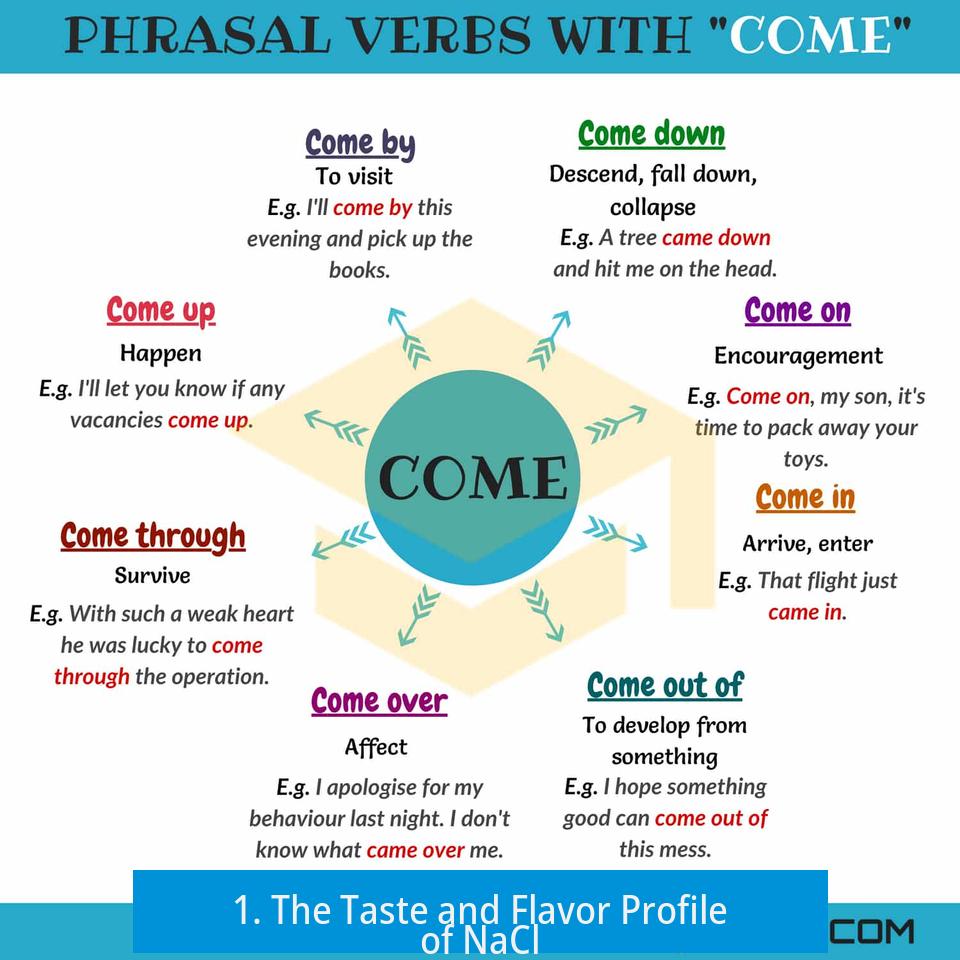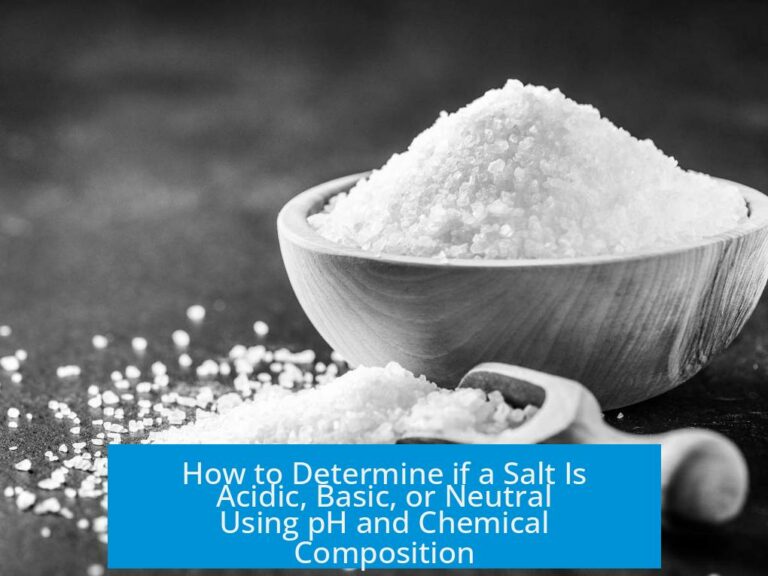How Come We Only Use NaCl to Salt Our Food?

Sodium chloride (NaCl) dominates as the seasoning salt primarily due to its optimal taste, biological compatibility, abundance, affordability, and safety profile, factors that other salts fail to match in combination. This article explores the reasons why NaCl is preferred over other salt types for food salting, detailing its taste characteristics, availability, physiological role, and historical use.
1. The Taste and Flavor Profile of NaCl

The defining characteristic of table salt is its “salty” flavor, which almost exclusively derives from sodium ions. Sodium chloride imparts a clean, straightforward salty taste highly favored by humans. Studies confirm that sodium salts trigger specific sodium ion channels on taste receptor cells on the tongue, producing the classic salty taste sensation.
Other salts vary widely in taste. For example:
- Potassium chloride (KCl): Tastes more bitter than salty and can produce an unpleasant aftertaste. It is sometimes used as a salt substitute but is not favored for regular salting.
- Lithium chloride (LiCl): Has a citric or slightly fruity taste but is psychoactive and not suitable for general use.
- Ammonium chloride (NH4Cl): Found in some candies and regional foods but excessive intake is unhealthy.
- Magnesium sulfate (Epsom salt): Tastes bitter and acts as a laxative, unsuitable for seasoning.
NaCl also has flavor-enhancing synergy. It can reduce bitterness and amplify sweetness and umami in food, providing a balanced and satisfying flavor experience unmatched by other salts.
2. Availability and Cost
NaCl is extremely abundant on Earth. It is the primary salt in seawater and commonly found as rock salt deposits. Extraction through evaporating seawater or mining rock salt is straightforward and low-cost. This readily available supply has built long-standing and efficient global supply chains, making NaCl inexpensive.
By contrast, alternatives like potassium chloride are less abundant or harder to isolate. KCl does not occur in seawater in high amounts and requires different extraction methods. Other sodium salts such as sodium carbonate or bicarbonate taste poor or have unwanted side effects, limiting their use as table salt.
3. Health and Biological Necessity
Sodium plays an essential role in human physiology. Sodium ions regulate nerve impulse transmission, muscle contraction, and fluid balance. Our biology has evolved to crave sodium. The human tongue specifically detects sodium ions, associating their presence with vital electrolytes necessary for survival.
Chloride ions, likewise, are important electrolytes aiding in stomach acid formation and maintaining acid-base balance. Together as sodium chloride, these ions maintain bodily homeostasis.
Other salts lack this biological harmony. Potassium, while also essential, can be toxic in high amounts. KCl tastes unpleasant and excessive intake can cause serious health issues. Lithium compounds affect brain chemistry adversely in large doses. Some salts like sodium nitrate, formerly common for meat curing, carry health concerns and are in reduced use.
4. Use of Other Salts in Culinary Applications
Although NaCl dominates as table salt, other salts find niche culinary roles:
- Potassium chloride: Used in “low-sodium” salt blends to reduce sodium intake, such as in commercially available products like LoSalt. Manufacturers mix KCl with NaCl to maintain acceptable flavor while lowering sodium levels.
- Sea salt: Typically mostly NaCl but contains trace amounts of other minerals (KCl, MgCl2, etc.) contributing subtle flavor nuances.
- Sodium glutamate (MSG): Used as a flavor enhancer imparting umami taste.
- Calcium chloride: Employed in food processing, such as cheese making and reducing acrylamide formation in cooked foods.
- Ammonium chloride: In certain traditional candies and cheeses, though used sparingly.
Other sodium salts like sodium bicarbonate (baking soda), sodium citrate, and sodium nitrate serve purposes beyond salting—leavening, emulsification, curing—rather than direct seasoning.
5. Historical and Evolutionary Perspectives
NaCl’s prevalence in nature and in the oceans made it the primary salt available to early life and human ancestors. Evolutionarily, organisms developed taste receptors attuned to sodium ions, guiding dietary preference toward sodium-rich foods for survival.
Historically, salt was valuable for preservation and nutrition before refrigeration. Human civilizations prized NaCl. Ancient cultures used other salts too, but NaCl’s abundance made it the basis of trade and diet. Some historical salts, such as Roman lead acetate, were toxic and abandoned over time.
6. Summary of Reasons NaCl Is Predominantly Used to Salt Food
| Factor | Why NaCl is Preferred |
|---|---|
| Taste | Pure salty flavor, enhances food taste, minimal bitterness or off-flavors |
| Availability | Abundant in seawater and mines, easy and cheap extraction |
| Biological Need | Essential for nerve function, muscle activity, and fluid balance; body craves sodium |
| Safety | Low toxicity in normal amounts compared to alternatives; other salts can be harmful |
| Economic | Established supply chains, low production cost, widely traded commodity |
| Historical & Evolutionary | Human taste receptors evolved to favor sodium; cultural and culinary traditions solidify usage |
Key Takeaways
- NaCl provides the optimal salty taste preferred by humans due to sodium ion channels in taste buds.
- It is highly abundant and inexpensive, sourced mainly from seawater or rock salt mining.
- The human body requires sodium and chloride ions, making NaCl biologically indispensable and favored.
- Other salts often taste bitter, toxic, or have off-putting flavors, limiting their use as table salt.
- While some alternatives exist for specific dietary needs, none match NaCl’s combination of flavor, safety, and availability.
- NaCl’s dominance has deep evolutionary and historical roots linked to its natural abundance and essential physiological role.
Why do we mainly use NaCl for salting food instead of other salts?
NaCl gives a clean salty taste that humans naturally prefer. Other salts often taste bitter or unpleasant. Sodium ions also trigger specific taste receptors linked to saltiness.
Is the abundance of NaCl a factor in its common use for seasoning?
Yes, NaCl is abundant in seawater and easy to harvest by evaporation or mining rock salt. This makes it cheap and widely available compared to other salts.
Can other salts like potassium chloride replace NaCl in food seasoning?
KCl is sometimes used as a salt substitute but has a bitter aftertaste and can be toxic in high doses. It’s less favored because it doesn’t taste purely salty and is harder to obtain.
Are there health reasons for preferring NaCl over other salts?
The body needs sodium for nerve function and fluid balance. Other salts can have harmful effects or disrupt electrolyte balance if consumed excessively.
Do other salts have any culinary uses aside from NaCl?
Yes, salts like ammonium chloride are used in candy, sodium nitrate for meat curing, and calcium chloride in food processing. However, their flavors and uses differ from table salt’s main role.





Leave a Comment